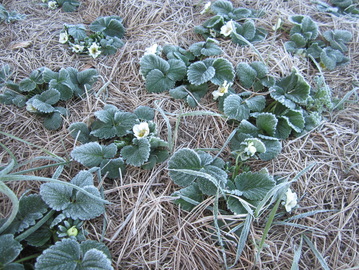
Last Tuesday (17th) was the last day for sowing or planting above-ground crops for the month, according to the moon calendar. So early in the week I was busy sowing lots of seeds in trays and pots in the greenhouse. While in the past I have tended to focus on only plants for human food, the more I read and learn the more I realise how important it is to plant things that benefit bees and other beneficial insects as well. This month so far I have planted:
Fruit & Vegetables: I have sown seeds of heading lettuce, gherkins, cucumber, spinach, watermelon, green zucchini, crown pumpkin, freckle lettuce, leeks, silverbeet (green and coloured), tomatoes (three varieties) and I also planted four feijoa bushes, and set up a bin full of potting mix and compost in which I planted some extra raspberry canes, and dug up the black currants that have been growing in a corner from cuttings I was given last year, and moved them to pot until I have a permanent place for them.
Flowers & Herbs: I have sown bee balm, borage, thyme, dill, chives, marigold, nasturtium, zinnia, Mexican sunflowers, alyssum, snapdragon, phacelia and cosmos. Many flower and herbs are both edible or medicinal for us, as well as providing food or shelter for bees and helpful insects, such as ladybirds, hover flies etc.
On Wednesday morning I awoke to a very frosty morning, with the outside taps frozen, ice on the troughs and all over the plants. This is why tender warm season crops need to be nurtured under cover at this time of year!
This week, my strawberries are flowering well (the photo above was taken on Wednesday morning, and they are all frosted but strawberries are pretty hardy plants and it doesn't bother them). My dwarf peach tree is in bloom too. The raspberries have all burst into leaf, and are showing signs of developing flowers, and the boysenberries are just starting to leaf up. The first of the buds have burst on the grapevine. Mmmmmm can almost taste the summer fruits to come!
I finally got around to going to say hello to a guy up the street who grows and sells herbs and veges, and we had a nice chat about his garden. He told me that last year he had a bed full of gorgeous cabbages in the middle of summer, when everyone else around here has all their brassicas decimated by white butterfly. At first he couldn't understand why, and then finally realised that prior to the cabbages, the bed had been full of garlic! So guess what I'm going to plant this summer after I harvest my garlic bed?? Normally I don't even both with brassicas over the summer, but maybe........
Speaking of garlic, I have a bed planted in garlic, in two halves. Traditionally, one is supposed to plant garlic around the shortest day of the year, and harvest it on the longest. This year, June 21st was the shortest day. I planted the first half of the bed on June 7th with cloves from garlic I bought from the supermarket (not knowing anywhere else to get it). I planted about 48 cloves. Four or 5 sprouted a while later, but I nearly gave up on the rest until I read they can take up to 6 weeks to show, so I decided to be patient. I planted the second half on August 25th (about the last chance for the year) with cloves from garlic purchased at a local market garden. Those are now just about all showing through the soil, and more of the first half have come through, but in disappointing numbers. I'll give the first half a little longer before just planting something else in the gaps. I've never grown garlic before, but I've read they can take ages to show above the soil, but meanwhile are developing strong root systems underneath. We'll see. I've had to cover the bed in netting to keep the cats off - when it's no longer needed there, I'll move it over to the strawberry bed.
My Frugal Fortnight concluded successfully - I did manage to stay away from the store and not spend any more money on food, and we certainly ate just fine! I saved some $500 over the two weeks that way. On Thursday, I did a regular fortnightly shop, but am thinking of making it last a month, as we still have some things I'd like to use up in the pantry. Meanwhile, I have more recipes to post over the next few days.
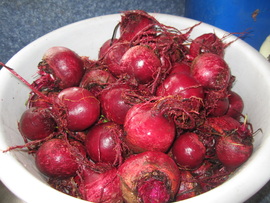
When the weather is too nasty to work outside, it's a good time to work in the kitchen! I finally found time to begin harvesting and bottling my beetroot. I got half the bed done on Friday, before running out of time and energy. I will post my Pickled Beetroot recipe separately.
I've been keeping a record of how many eggs are being laid by which group of chickens over the past fortnight. As of yesterday, we've gotten 206 eggs over the last 13 days! That's a lot of eggs! I'm going to try out some methods of preserving them this week, but then I also need to start selling the on-going surplus, which will help to pay for the chicken feed. Free-range eggs anyone?
And lastly, I've begun planning a gardening talk I'll be giving at the local library on October 12th. If you're local, I hope you will come along!
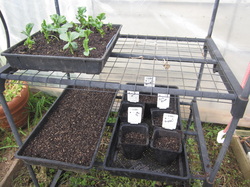
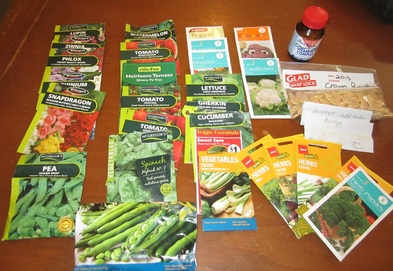


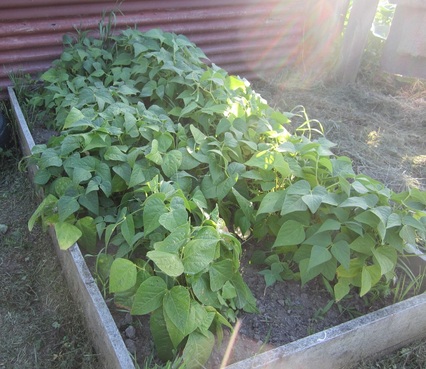
 RSS Feed
RSS Feed
